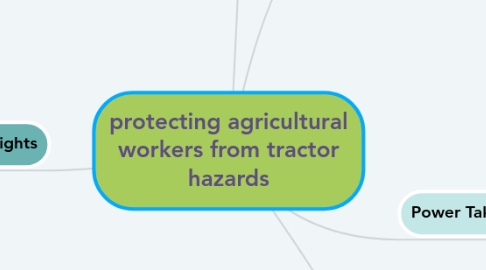protecting agricultural workers from tractor hazards
by Atcharaphan Boonyuen

1. ROPS and Seatbelt Requirements
1.1. Each tractor with a ROPS must have a seat belt.
1.2. Ensure that each operator uses a seat belt properly
1.3. Employers must ensure that each operator tightens their seat belt so that they are confined within the ROPS protective area.
2. Emergency Planning and Preparedness
2.1. Develop an emergency action plan that addresses all likely hazards
2.2. Designate an emergency staging area for the field or the office
2.3. Train tractor operators on how to respond to emergency situations
2.4. Ensure that each tractor has a first-aid kit and a working fire extinguisher
3. Workers’ Rights
3.1. Working conditions that do not pose a risk of serious harm
3.2. Receive information and training (in a language and vocabulary the worker understands) about workplace hazards, methods to prevent them, and the OSHA standards that apply to their workplace
3.3. Review records of work-related injuries and illnesses
4. Tractor Operator Training
4.1. Comply with the tractor’s operating instructions
4.2. Allow no riders, unless the tractor is manufactured with a seat and a seat belt for each rider.
4.3. Set the brakes and hand brake, if available, when the tractor is stopped for more than a few seconds
4.4. Ensure that operators have the experience and knowledge to operate the tractor
5. Power Take-Off (PTO) Shafts
5.1. Keep all guards in place when the machine is in operation
5.2. If possible, avoid working alone around PTO-driven machinery. If entanglement occurs, a coworker may be able to stop the PTO shaft in time to prevent more serious injury, or death
5.3. Ensure that everyone nearby is clear of the machine before starting the tractor’s engine and engaging the PTO shaft’s selector switch


